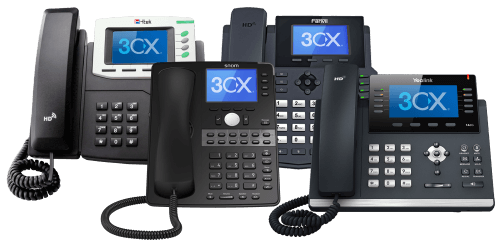When it comes to SIP trunks, it’s all about modern telecoms, SIP Trunking is just one of the processes used for VoIP communications, it’s similar to how HTTP functions with pages online, it offers a way for voice signals to convert into data, this can then be decoded by a device and used by the caller.
SIP, which stands for Session Initiation Protocol, is a way to make end connections that come under data and voice transfers over the internet. The trunking element refers to a bundle of phone lines that have been shared between a number of users. Modern trunking is the virtual link between the PBX and the standard phone network, the PSTN and using the internet connection.
Businesses that have modern IP PBX (PBX is for SIP to transfer the data), will also need a way to connect to a wider PSTN. This is usually done with an ISDN, but ISDN is being phased out so SIP Trunks are now the industry standard when it comes to connecting business phone networks over the internet.
Who needs SIP Trunks?
Any business, if you already have an IP PBX, you will know that SIP Trunks are vital. If you’re new to phone systems or are changing from analogue PBX, then you will have a choice to make them an on-premise IP PBX or a cloud-hosted PBX system. Using on-premise hardware alongside SIP trunks is the best option for businesses that have these characteristics.
IT Managers and Telephony Specialists who are in-house
Premise PBX systems will require professionals to set them up and maintain them, this can be an agency or a managed service provider, they will also require one in-house contact or someone that has knowledge of telephony. On-premise PBX systems that have been combined with relevant setups and maintenance, can be expensive in the short term.
Call volume
Businesses or sites that have a high volume of inbound and outbound calls will need flexibility and the cost-effectiveness that SIP trunking offers. Call centres, like sales or support hubs, are likely to provide more complex PBX systems that will be supported by specialist high volume SIP services.
These businesses will need to make sure that they have the right SIP provider that will fit their profile, this can help to create savings in the long run but will be an upfront investment in hardware and setup.
Hosted PBXs for other businesses may be a better fit as they will permit a range of features and are reliable when it comes to maintenance and the setup cost. Good VoIP providers will help you to choose the best option for your business.
SIP Trunks and SIP Channels
Trunks are traditional groups of cables that will link from the local telephone exchange to exchange, with the internet, this process is now virtual. Trunks are a collection of channels, each one can handle multiple calls. The number of calls that you will need as a business will be tied to the number of calls you make and receive at the same time, a good SIP provider can help you to calculate this.
Channels are a key component when it comes to understanding how trunks are provided and packaged. SIP trunks include a number of channels, all of which are virtual versions of telephone lines. Each channel will provide two concurrent calls, one incoming or outgoing. If your business makes lots of calls but rarely has more than two at the same time, then you won’t need more than two channels. If your business receives lots of inbound calls at once, you’ll need to consider adding a bigger number of channels.
Why use them?
The majority of businesses who are using ISDNs and switching to IP based telecoms services are crucial, these benefits will be relevant when it comes to using SIP and they also method VoIP telephony.
Saving on costs
When it comes to ISDN and traditional telephony, businesses will end up paying for the capacity that they won’t ever use. SIP Trunks are packaged much more accurately around your firm’s usage. More importantly, once you’ve set up with a SIP Trunk provider, line rental and calls will be much cheaper. It will become more important for businesses who have a high level of outbound calls, this includes call centres, large sales teams and consultancy businesses.
Flexibility
SIP trunks will take away the location of the location-based restriction on the telecommunications, this will mean that you can choose any number, no matter the location. These are perfect for international based customers, clients or suppliers, you could move offices or move to another country and keep the same number.
The future
ISDN is an effective way for companies to combine their voice and data services with traditional lines. In this modern age, connectivity is always the main focus. With this in mind, business telephony will revolve around power and how reliable a company’s internet connection is. IP based PBXs are cloud-based and will be mandatory.
Control
Trunks are easy to scale up or down and change depending on usage. If your organisation experiences growth, don’t worry about installing new ISDN lines, you can upgrade your number and capacity of trunks easily.
Universal communications
From calls to texts and emails, instant messaging and conferencing, SIP trunks are crucial for building blocks in linking a business’s uses and ways of communications and communicating into one place.
Trunking is virtual and rather than a physical installation, businesses should expect that trunks are set up and working quickly, even within 48 hours, in the majority of cases, organisations can use their existing internet infrastructure and connectivity with no requirement for any extra installation.
SIP Trunk companies need experience and expertise when it comes to helping you get the right combination of services, both quickly and easily. You would expect a fast and reliable internet connection, this is crucial, as is IP PBX and IP enabled.















